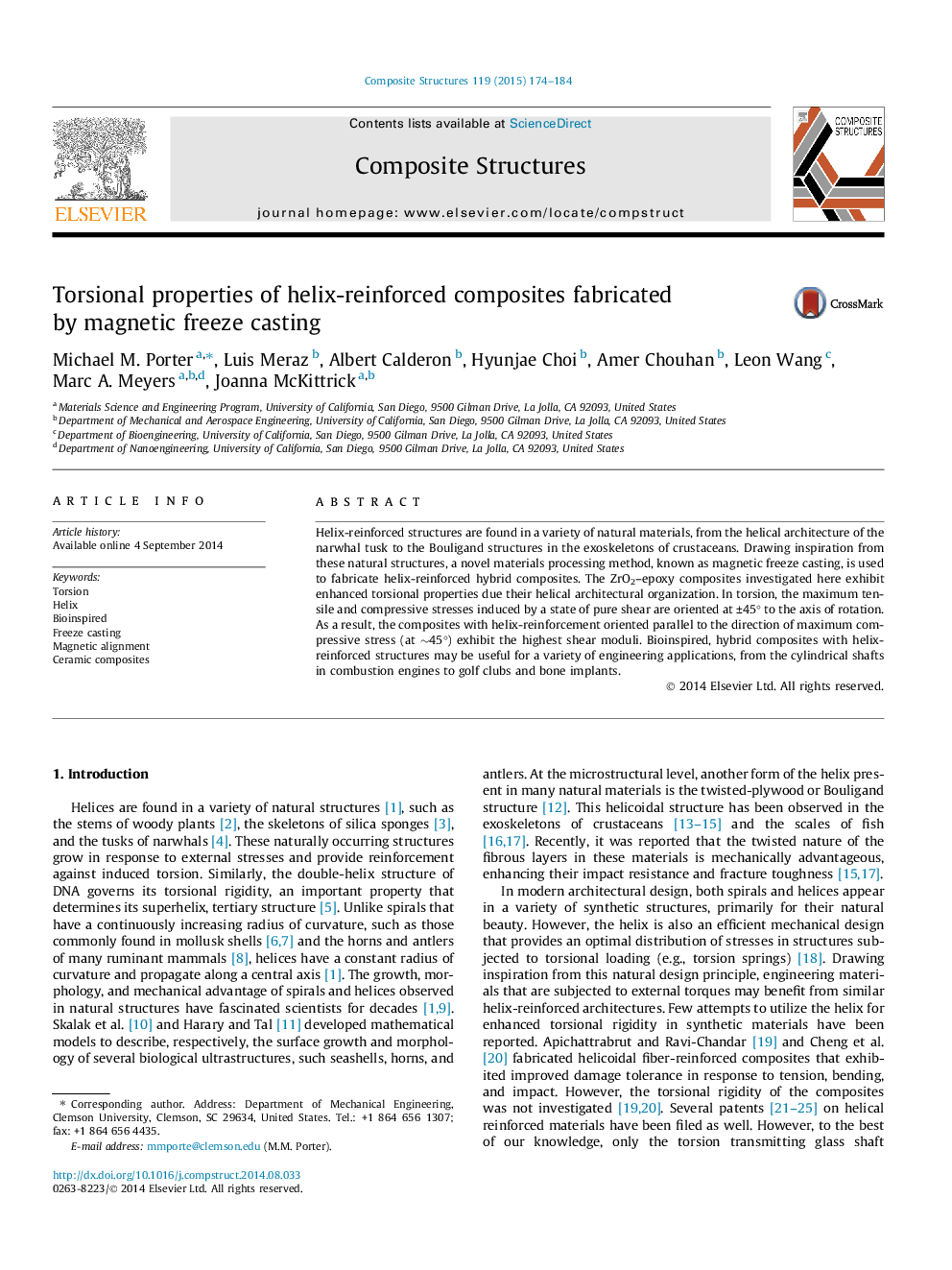| Article ID | Journal | Published Year | Pages | File Type |
|---|---|---|---|---|
| 251463 | Composite Structures | 2015 | 11 Pages |
Helix-reinforced structures are found in a variety of natural materials, from the helical architecture of the narwhal tusk to the Bouligand structures in the exoskeletons of crustaceans. Drawing inspiration from these natural structures, a novel materials processing method, known as magnetic freeze casting, is used to fabricate helix-reinforced hybrid composites. The ZrO2–epoxy composites investigated here exhibit enhanced torsional properties due their helical architectural organization. In torsion, the maximum tensile and compressive stresses induced by a state of pure shear are oriented at ±45° to the axis of rotation. As a result, the composites with helix-reinforcement oriented parallel to the direction of maximum compressive stress (at ∼45°) exhibit the highest shear moduli. Bioinspired, hybrid composites with helix-reinforced structures may be useful for a variety of engineering applications, from the cylindrical shafts in combustion engines to golf clubs and bone implants.
